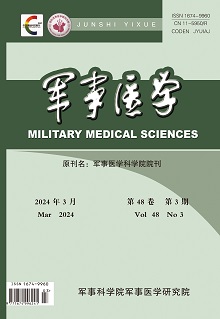Original articles
MENG Fanheng, LUO Fuyao, FENG Ting, YANG Yu, XU Rui, ZHU Shuaiming, SHAN Junjie
Objective To establish the characteristic chromatograms of thin-layer chromatography (TLC) and high-performance liquid chromatography (HPLC) of the aqueous-extract of Inula japonica Thunb.,and to determine the contents of six components (chlorogenic acid,caffeic acid,isoquercitrin,1,5-dicaffeoylquinic acid,4,5-dicaffeoylquinic acid and inulicin) in the aqueous-extract. Methods (1)The HF254 TLC silica gel plate,developing solvents of n-butanol-acetone-pyridine-water-glacial acetic acid (1∶5∶3∶1∶10 μL) and 10% sulphuric acid-ethanol were used before the chromatographic spots were examined at 365 nm. (2)The Sino Chrom ODS-BP column (ϕ4.6 mm× 250 mm,5 μm) and a mobile phase of 0.05% phosphoric acid solution and acetonitrile were used. The flow rate was 0.8 mL/min,the column temperature 35℃ and detection wavelength 205 nm. (3)The analytic conditions of the six components were similar to those described in method (2),but the wavelengths were respectively 203 nm (inulicin),256 nm (isoquercitrin) and 327 nm (caffeic acid,chlorogenic acid,1,5-dicaffeoylquinic acid and 4,5-dicaffeoylquinic acid). Results (1)The TLC chromatograms showed fine properties before and after the colour developer was sprayed. (2)Twenty-eight common peaks were marked in the HPLC characteristic chromatogram,so were ten components (chlorogenic acid,caffeic acid,1,5-dicaffeoylquinic acid,4,5-dicaffeoylquinic acid,taxifolin, rutin, quercitrin, isoquercitrin, luteolin and inulicin). The aqueous-extracts of eleven batches of materials of Inula japonica shared much similarity based on similarity and cluster analysis. (3) There were good linear relationships,and the linear ranges of chlorogenic acid,caffeic acid,isoquercitrin,1,5-dicaffeoylquinic acid,4,5-dicaffeoylquinic acid and inulicin were 3.25-65.00 μg/mL,4.00-80.00 μg/mL,1.60-32.00 μg/mL,17.75-355.00 μg/mL,2.50-50.00 μg/mL and 3.75-75.00 μg/mL,respectively. The contents of chlorogenic acid,caffeic acid,isoquercitrin,1,5-dicaffeoylquinic acid,4,5-dicaffeoylquinic acid and inulicin in elven batches of water-extract from Inula japonica were 3.38-6.66 μg/mg,2.13-7.35 μg/mg,0.51-1.57 μg/mg,15.81-24.87 μg/mg,0.50-1.08 μg/mg and 0.77-4.73 μg/mg,respectively. Conclusion The specific TLC and HPLC characteristic chromatograms can help ensure accurate quantitative determination of six components of the water-extract of Inula japonica,which can be used for quality control of the water-extract of Inula japonica.
